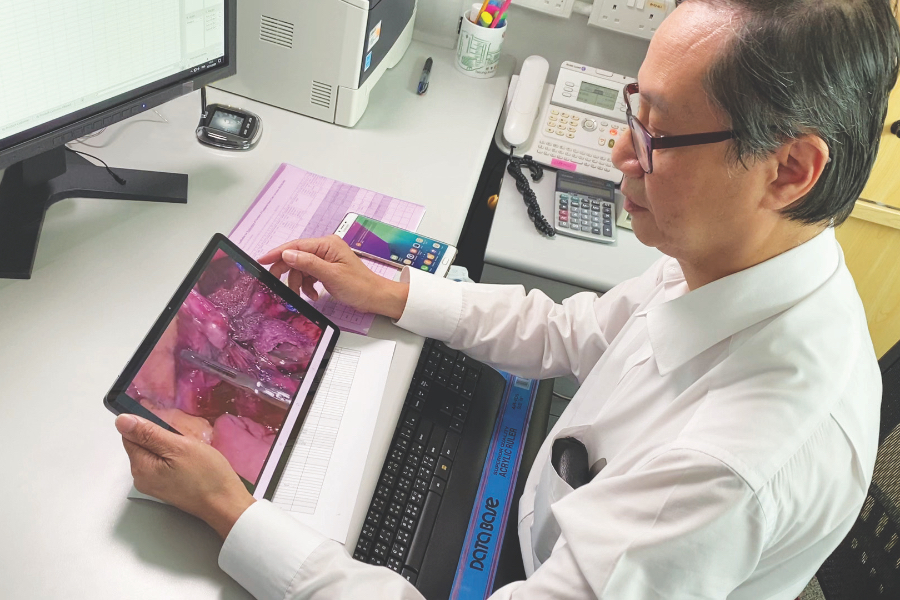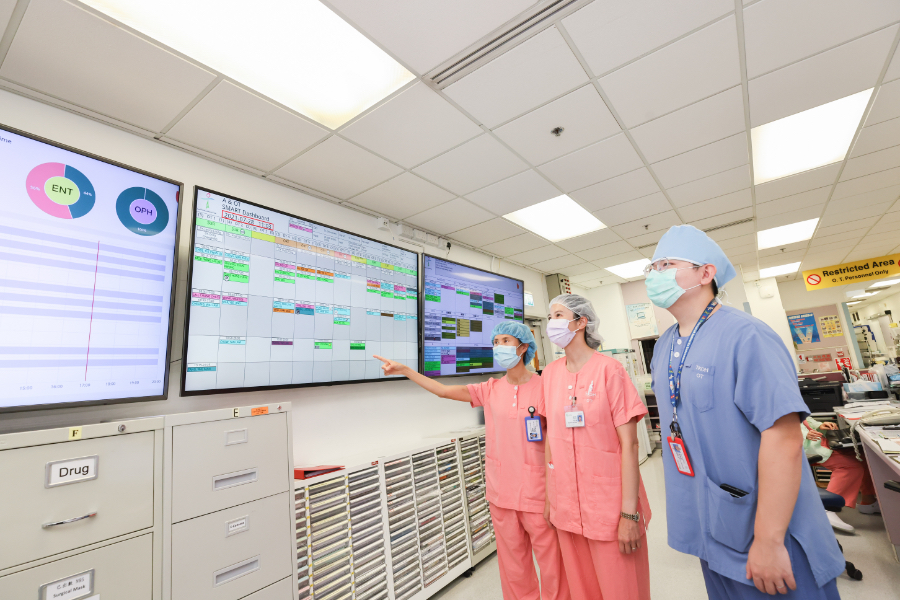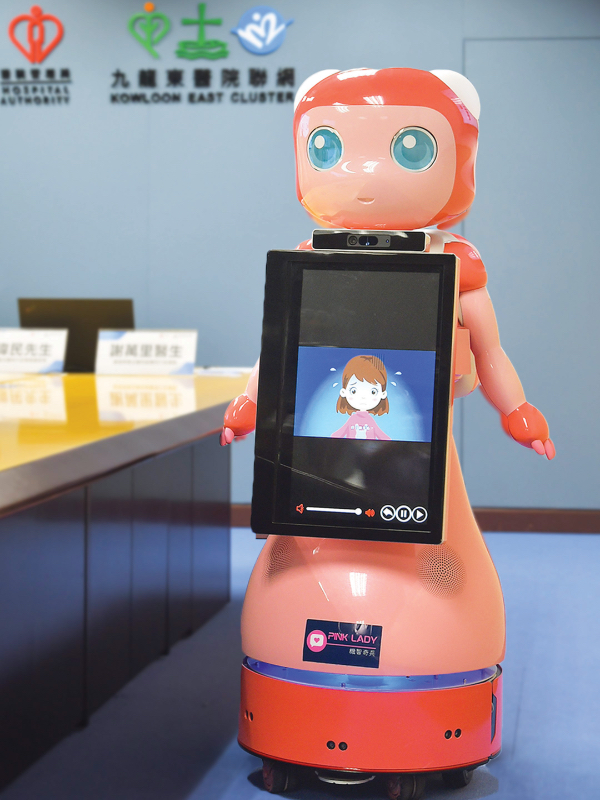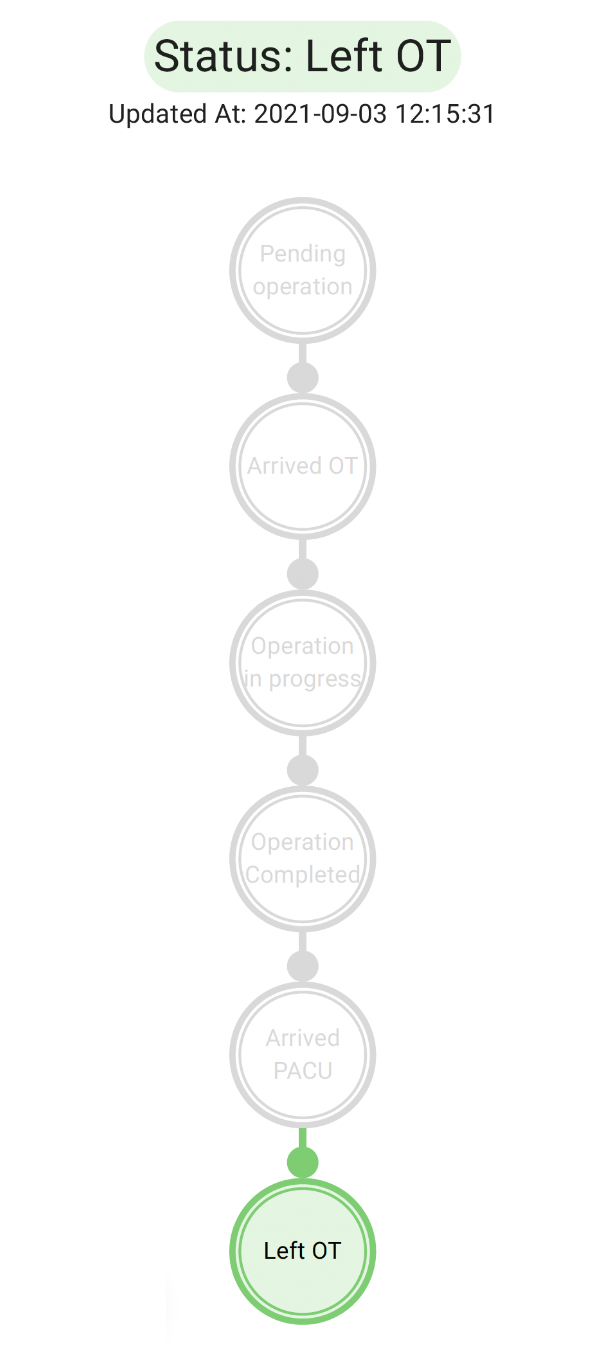Smart operating theatres emphasise people-oriented spirit
The Kowloon East Cluster (KEC) and New Territories West Cluster
(NTWC) have developed smart operating theatres (OTs) that not only can simplify routine
procedures, improve surgical efficiency, but also provide considerate and caring service
for patients and their families. This smart breakthrough underscores the importance of
always considering the wellbeing of patients and employees while adopting new hardware
and technology.
5G Operating Theatres
With the implementation of 5G technology in the OTs in the two
clusters, doctors can monitor the progress of surgery and even provide guidance from a
distance to enhance the efficiency of the surgery. “Previously, surgeons would have
difficulties in describing surgical situations to senior doctors by phone”, explains Dr
Dione Szeto, Coordinator of Smart Hospital Development and Chief of
Service of Department of Anaesthesia and Operating Theatre Services at TKOH, “TKOH is
the first hospital in Hong Kong to adopt 5G technology. Now, with the 5G technology
adopted, even if the senior doctors are far away from the OT, they can still share
high-definition surgical images instantly on the 5G tablet. They can also make remarks
on the 3D surgical views in real time to provide remote guidance to the surgeons in the
OT, increasing the efficiency and accuracy of surgery.”

The Smart Dashboard
The success of a smart OT depends on teamwork and a people-oriented
spirit, according to Department Operations Manager Doris Lo and
Advanced Practice Nurse Dick Ngan of TKOH’s Department of Anaesthesia
and Operating Theatre Services. One example is the Smart Dashboard pioneered by the team
five years ago. Dick, who is also the Nursing Informatics Coordinator, explains it
records the surgical experience of clinical staff, which can be extremely useful when
complex or rare operations arise. “The Smart Dashboard helps identify suitable manpower
shortly according to the data base of staff surgical experience, which is more efficient
than relying on the memory of senior nurses, who used to be responsible for scheduling
rosters for the team in the past,” he says.
On the suggestion of clerical staff, the Smart Dashboard allows for the digitalised schedules of about 200 clinical and supporting staff in the OTs, so that details can be seen at a glance when they step into the OTs. Doris recalls, “In the past, clerical staff spent two hours a day for updating roster on the white magnet boards, which was very time-consuming. The Smart Dashboard has simplified this tedious routine work, and allowed our colleagues to improve their work efficiency as well as being engaged in the development of a smart hospital.”
On the suggestion of clerical staff, the Smart Dashboard allows for the digitalised schedules of about 200 clinical and supporting staff in the OTs, so that details can be seen at a glance when they step into the OTs. Doris recalls, “In the past, clerical staff spent two hours a day for updating roster on the white magnet boards, which was very time-consuming. The Smart Dashboard has simplified this tedious routine work, and allowed our colleagues to improve their work efficiency as well as being engaged in the development of a smart hospital.”

New ways for OT guide
Different hospitals have different ways to help patients and family
members understand surgical processes – TSWH has launched a virtual reality (VR) guide
to the OT. Patients and family members can wear VR glasses to experience a simulated OT
environment to ease their anxiety before an operation. They can even watch a video of
the simulation at home.
Elsewhere, UCH has introduced a team of smart robots to ease the heavy workload of staff. The Pink Lady (pictured) in Day Surgery Centre, for instance, gives patients and their families tips about the surgery and information about the OT. The Pink Lady is also equipped with a variety of games to keep patients entertained and help them relax before surgery, allowing medical staff to focus on their clinical work.
Elsewhere, UCH has introduced a team of smart robots to ease the heavy workload of staff. The Pink Lady (pictured) in Day Surgery Centre, for instance, gives patients and their families tips about the surgery and information about the OT. The Pink Lady is also equipped with a variety of games to keep patients entertained and help them relax before surgery, allowing medical staff to focus on their clinical work.

FamilyLink
When a loved one undergoes surgery, family members are inevitably
anxious for progress updates, but busy surgeons and nurses are not always available to
respond immediately to their enquiries. To address this, TSWH launched a trial surgery
platform called FamilyLink in July. Patients’ relatives can get a personal QR code and
check the real-time status of patients and information to save them from long waits in
the hospital.
FamilyLink was developed as part of the infection control measures for the COVID-19 pandemic, explains Dr Carmen Lam, Consultant of the Department of Anaesthesia and Operating Theatre Services of the NTWC. “Family members are not supposed to wait outside OTs, but they would make excuses to pass by the OT to try to find out how the operation was going,” she says, “we understand their anxiety, and we hope this smart initiative can help keep them informed. The FamilyLink platform will be introduced to OTs in Pok Oi Hospital and Tuen Mun Hospital in the next stage.”
FamilyLink was developed as part of the infection control measures for the COVID-19 pandemic, explains Dr Carmen Lam, Consultant of the Department of Anaesthesia and Operating Theatre Services of the NTWC. “Family members are not supposed to wait outside OTs, but they would make excuses to pass by the OT to try to find out how the operation was going,” she says, “we understand their anxiety, and we hope this smart initiative can help keep them informed. The FamilyLink platform will be introduced to OTs in Pok Oi Hospital and Tuen Mun Hospital in the next stage.”
